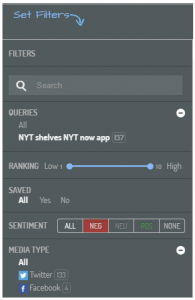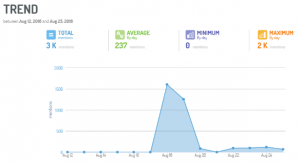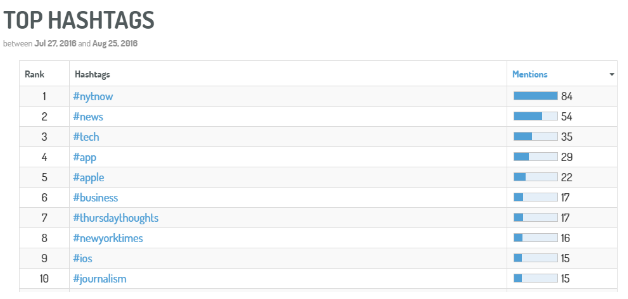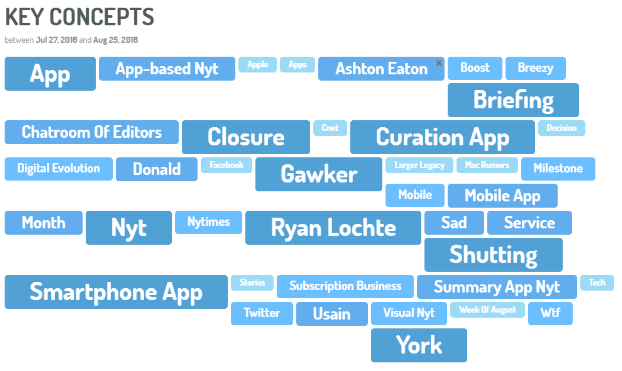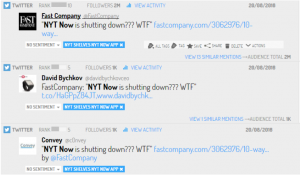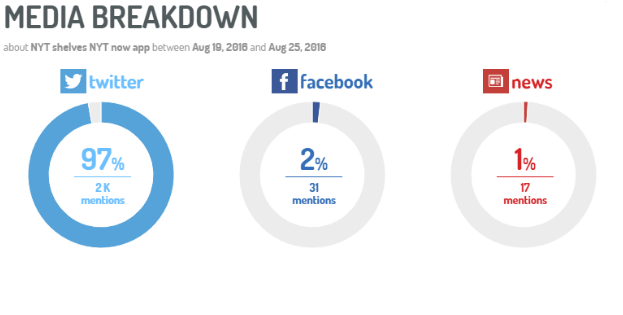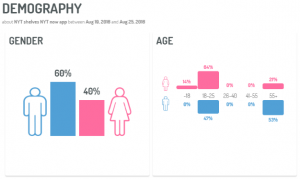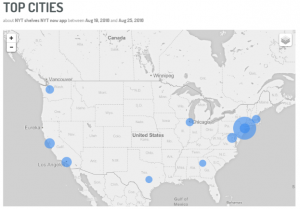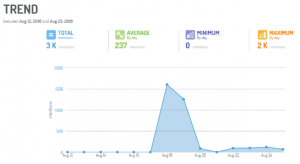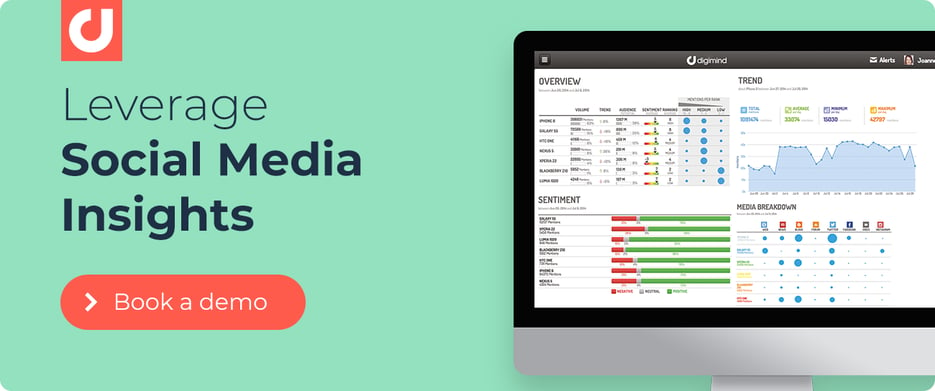Social Media Listening for Crisis Management
When a crisis occurs for any business there is rarely a simple solution to the problem. Once a crisis occurs the only thing a company can control is the way they handle the incident, and how they communicate those efforts. Simply put, the management of the crisis is paramount in determining if the brand suffers serious damage, or if instead they are able to leverage the event into a net positive.
Social media listening gives companies advance warning to potentially major public relations issues, which is worth its weight in gold in times of crisis. This article will go over some real world examples of social media crises as well as include screenshots from Digimind’s proprietary social media monitoring platform Digimind Social.
Background
To begin, here are some examples of social media crises to remind us how they can begin totally benign and spiral out of control, as the case for the "Viral Applebee’s Receipt" or how they begin as a catastrophe and then get mismanaged into an even greater one, such as the infamous "Gulf Oil Spill".
The Five Steps
Having a predetermined crisis management plan is the first step and the building block for your brand’s survival, however that plan requires information to be effective which is where social media listening comes in.
Social media listening is an integral aspect of modern day crisis management, without it, it would be impossible to effectively complete the following five steps for managing brand crises:
-
- Get advance warning of when a crisis is occurring
- Determine what the main public issue(s) are
- Create an informed and relevant corporate communications strategy
- Determine when the crisis is over
- Analyze results and note the lessons learned
By investing in a social listening platform, companies gain the ability to monitor their brand (and their competitor’s brands) on social media and analyze that discussion. Without access to this intelligence companies are blind to what conversations are transpiring in real time, and are liable to mismanage their own crisis.
Step 1: Get advance Warning of When a Crisis is Occurring
To identify when a spike in mentions is occurring, a company can create alerts that will trigger an email notification whenever a certain situation occurs. An example of an alert for potential crises is “send notification to manager@company.com if more than 500 negative posts occur in any given hour”; in the example below the company is alerted whenever a discussion of their brand breaches the threshold set for posts with a negative sentiment.
Another way to spot a potential crisis is to watch for a spike in mentions of your brand (regardless of their sentiment). For example, on August 18th, 2016 The New York Times announced it was discontinuing its popular "NYT Now" app. We tracked the conversation by monitoring any discussions with @nytnow, #nytnow and any related keywords on the off chance it went viral.
While there was a noticeable spike in conversation around the announcement it quickly tapers off; evidently the closure of the well-liked application was not enough to create an enduring negative sentiment towards the powerhouse brand.
As there will be hundreds of events that occur with the potential to become crises, the value in using social media listening remains as it allows companies to ‘keep an ear to the ground’ and not get blindsided once an issue has already exploded on social media.
Even though we have already determined this is not a social media crisis for The New York Times, we are going to continue to analyze the data spike as if it had been a true crisis.
If the spike had continued, we would first look at the sentiment. If the sentiment of the posts were mainly positive it would not be considered a crisis. Let’s take a look at the sentiment of the "NYT Now" closure discussion:
42% negative sentiment is significantly higher than a brand would view as acceptable (10%-20% is normal); however as the spike in volume returned to baseline after the first two days, the management at the NYT can reasonably expect the sentiment to return to normal levels as well.
Step 2: Determine What the Main Public Issue(s) are
To ensure that we’re not missing anything, we can check what the top hashtags and key concepts were. We’re keeping an eye out for anything that could be considered negative. In terms of the top 10 hashtags, we don’t see any overtly negative hashtags in this case.
The key concepts look mostly positive or neutral as well. There are three topics that would be worth investigating: ‘Closure’, ‘Shutting’ and ‘Wtf’.
After clicking on ‘Wtf’ we see that almost all of the tweets are people sharing the same Fast Company article, which as you may imagine used that acronym quite a bit. However, while the article is negative, it is evidently not crippling.
Step 3: Create an Informed and Relevant Corporate Communications Strategy
The top issues were from the previous section has determined the what for our corporate communication strategy; now we should take look at the demographics to help determine how we deliver the message.
This data helps us outline the broad strokes of the communication plan, as it gives us hard data on where the conversation is taking place, who the people posting are, and where they are posting from. This in turn helps enterprises avoid posting official messaging on a channel no one is using, in a format unpopular with stakeholders and with information unrelated to their specific geographic area or interests.
Step 4: Determine When the Crisis is Over
As we mentioned earlier, you generally look at the 1) volume and 2) percent of posts with negative sentiment; if either of those appear to be at acceptable levels then your crisis may be over.
Step 5: Analyze the results and note the lessons learned
This is a step often forgotten by many organizations and in many situations. Once the crisis has been managed successfully (or unsuccessfully) the company has time to learn from both their successes and mistakes, and most importantly document them.
As the saying goes ‘history repeats itself’ and if an organization doesn’t make an effort to learn from their mistakes (or better yet, the mistakes of their competitors) they may be doomed to replicate them.
And remember these unexpected crises do not always result in the loss of the corporate narrative; in some rare cases a clever communication strategy can leverage the increased media coverage and regain positive public sentiment.
The recent Delta systems failure is one such example. Delta was able to correctly gauge the public mood and accurately addressed the problem.
Want to protect your organization from a social media crisis? Why not try out Digimind Social for free.
Written by Jerome Maisch
Marketing Manager @digimindci. Passionate about big data & social marketing. Photography, music and hiking lover

